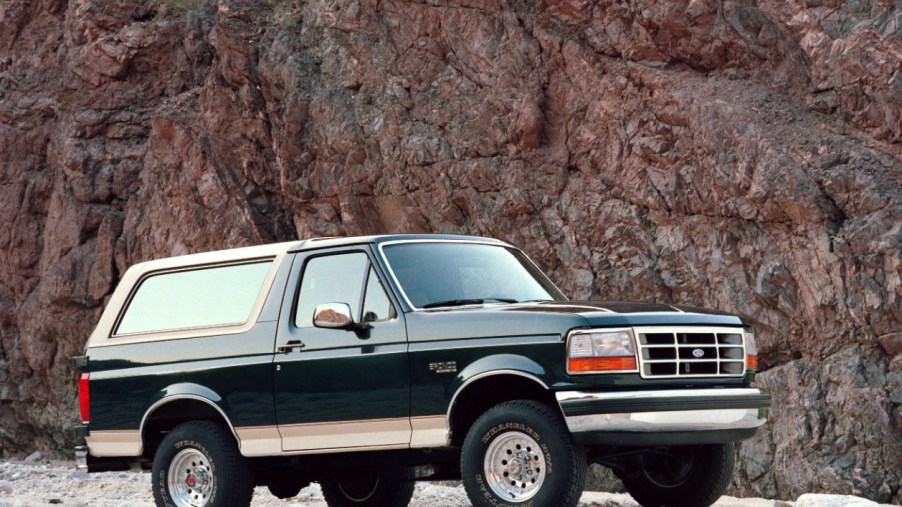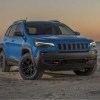
Five Things That Make the 1996 Ford Bronco a True Old-School SUV
The Bronco was one of the original SUVs, creating a class of vehicle which could be used for both transportation and recreation. Ford made a notable portion of their legacy on the Bronco, which was produced every year between 1966 and 1996. The Bronco is making a strong comeback in 2020, however.
With engine options ranging from beefy 300-402 cubic-inch V8 blocks to inline-six power plants, the Ford Bronco has fulfilled different roles to a wide range of people. Car enthusiasts, four-wheel-drive enthusiasts, drag-racing fanatics, and so much more have gone to great lengths to make their Bronco their own. Much like the Jeep, part of the benefit to a compact and mid-range SUV is customization.
Wagon-based frame
Out of three Bronco models, the wagon-styled model was the only survivor to the end of production date in 1996. The wagon frame provided space for passengers, cargo, and gear for off-road adventures as well as a highly-stable alternative to the Jeep Wrangler CJ. The two-door Bronco wagon managed to outperform the Chevy Blazer and the GMC Jimmy.
Ability to carry passengers
Despite being a two-door frame, the Bronco wagon readily accommodated passengers with a second row of seats and held ample gear for the ride once it had adopted a truck base, following the second generation. As a two-door SUV, the Bronco was very successful, selling at its peak in the late 1970s, Ford managed to sell 26,000 units in just one year.
Body-on-frame design
By adapting the Bronco to a truck frame, Ford was able to create a more cost-effective, stable vehicle. Beyond the second generation of Bronco, Ford based the old-school SUV on F-series and Ranger pickup trucks, allowing them to expand engine and trim options without substantially increasing production costs. Doug DeMuro highlights this as one of the strong points of the original Bronco, noting that it added substantially t the vehicle’s reliability.
Cargo space
The Bronco was able to hold up to 100 cu.ft. of cargo or seat up to six people. By utilizing a fiberglass cover, Ford was able to keep the weight down and create a genuinely spacious interior without sacrificing performance. Many of the engine models fell below 200 hp, despite being V8s.
Four-wheel drive availability
A defining characteristic of the Ford Bronco was its ability to get anywhere (occasionally with a few modifications). Despite the benefits of a solid front axle, consumers favored a split axle due to a gentler ride, which hindered the vehicle’s viability for off-road use. Even with this hindrance, however, the Bronco provided drivers everywhere with an enjoyable ride.
Four-wheel drive allowed drivers to get to their destination safely regardless of the weather. Many Broncos are built specifically for snow and ice transportation. It is imperative that drivers remember traction on snow does not mean traction on ice.
Generally high safety levels
Safety was a major concern for Ford. At several points through its lineage, the Bronco was deemed unsafe because of its tendency to roll over in the Bronco II model, removable top issues, and general lack of extra safety features, such as airbags, three-point driver harnesses, and so on. Ford worked to remove the vast majority of safety concerns from the Bronco with each iteration, ensuring consumers could trust the new vehicle they were buying.
Regardless of the purpose for seeking a Ford Bronco, the line of vehicles offered something for nearly everyone—except fuel efficiency-focused consumers. Ford delayed the Bronco model 3 release due to gas-guzzling concerns. As an old school SUV, the Bronco delivers joy, safety, cargo space, and people space in spades. It is hard to find a better old school SUV, largely due to the wide variety of options available to drivers.


